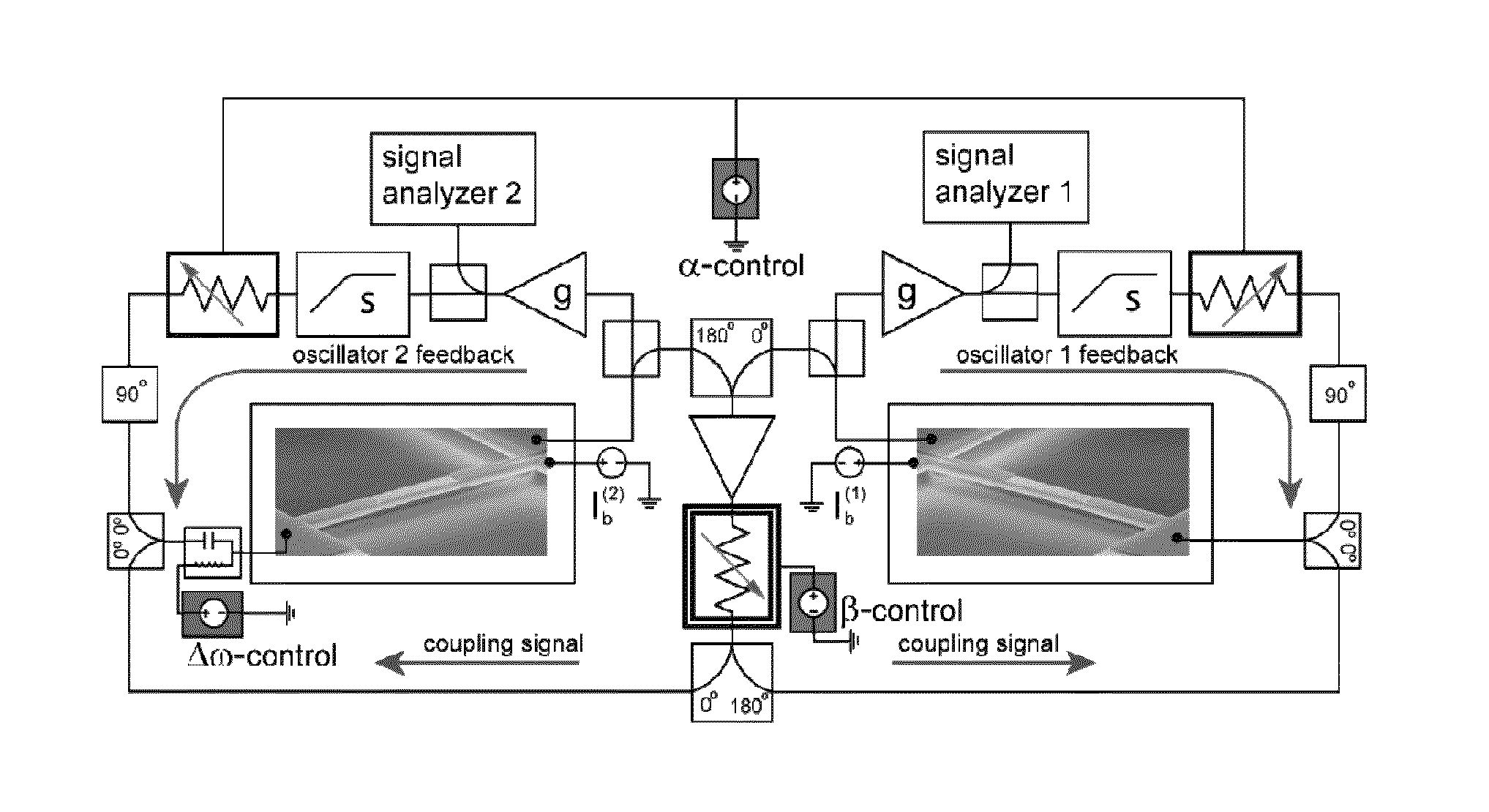Synchronization of nanomechanical oscillators
a synchronization and nanomechanical technology, applied in the direction of oscillator generators, pulse automatic control, solids analysis using sonic/ultrasonic/infrasonic waves, etc., can solve the problems of reducing the advantages of the array, limited experimental studies on synchronized oscillators, etc., to reduce phase noise, excellent observation and control of parameters, and small footprint
- Summary
- Abstract
- Description
- Claims
- Application Information
AI Technical Summary
Benefits of technology
Problems solved by technology
Method used
Image
Examples
working examples
[0080]Experimental Methods: Device fabrication has been previously described by Villanueva et al23. All measurements were taken at a pressure of less than 100 mT through a balanced bridge technique (not pictured in the figure)29 in order to reduce the effect of parasitic capacitances24. All three synchronization parameters are modified by external and independent DC voltage sources. The coupling strength can be controlled by adjusting the feedback gain in the coupling loop. We amplify and tune (using the red DC control voltage box in FIG. 1) a voltage controlled attenuator (double-line box in FIG. 1) in order to modify this coupling feedback gain. The frequency difference between the two oscillators can be linearly controlled by inducing stress in one of the beams by a DC piezovoltage, as shown by the blue box in FIG. 1. The frequency pulling can be adjusted by varying the absolute oscillator amplitudes (keeping the relative amplitudes fixed to ensure that Equations 1-3 remain valid...
ring embodiment
[0181]For chains of oscillators connected as a ring (linear chains can be made into a ring by connecting the ends together), synchronized states of disconnected topologies may be found, namely with different integral winding numbers of the phase around the ring. In addition to the quasi-uniform state, in which the oscillators synchronize to roughly equal phases (with small phase differences to counteract the small frequency differences), splay states in which adjacent phases are rotated by about 2πn / N, with n the integral winding number, may also be exist. If there are reactive components to the coupling, these states will consist of waves of phase propagating around the ring. In FIG. 27, we show a simulation of a coupled oscillator ring with a total initial phase winding number of 1, which gives a wave propagating around the ring and smoothes out phase imperfections (FIG. 27a) even in the presence of dispersion (FIG. 27b). The topology of the ring remains constant while the propaga...
PUM
 Login to View More
Login to View More Abstract
Description
Claims
Application Information
 Login to View More
Login to View More - R&D
- Intellectual Property
- Life Sciences
- Materials
- Tech Scout
- Unparalleled Data Quality
- Higher Quality Content
- 60% Fewer Hallucinations
Browse by: Latest US Patents, China's latest patents, Technical Efficacy Thesaurus, Application Domain, Technology Topic, Popular Technical Reports.
© 2025 PatSnap. All rights reserved.Legal|Privacy policy|Modern Slavery Act Transparency Statement|Sitemap|About US| Contact US: help@patsnap.com



